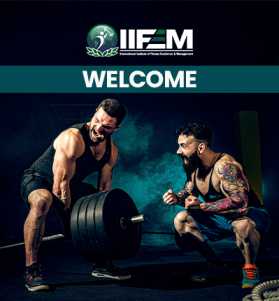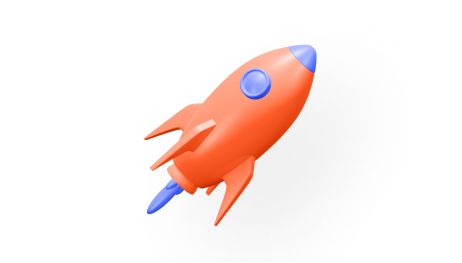
10 Tips for Strength and Conditioning for Athletes
Here are my top ten tips to ensure athletic success.
1. Bodyweight before external resistance
I’m still surprised at the eagerness of most coaches to get their athletes under the bar. Many coaches and athletes make the mistake of beginning a strength routine and going straight for the heavyweights. This usually ends up causing an injury. An athlete has no business using load if he/she cannot stabilize, control and move efficiently with only their body weight. If you can’t stabilize your shoulder girdle and core doing push-ups then there is no way I’m going to put you under a bench press bar.
So your strength program in the beginning stages may include no weights whatsoever. It will work better and faster than a typical program m that relies primarily on weights and machines in the beginning stages.
2. Train in a standing position - with free weights
Isolated muscle group training, outside of rehabilitation has no place in athletic training. An athlete should focus on strengthening specific movements. True muscle isolation is impossible anyway, so let’s focus on using that body to work in an integrated fashion.
3. Train unilaterally and multi-planar
The majority of strength training programs take place in the sagittal plane with bilateral movements. However, the majority of sport takes place in all 3 planes simultaneously with primarily unilateral movements. EVERY single sports conditioning program should include split squats, step-ups and lunge variations.
4. Use all primary methods to develop strength
Traditional strength training programs have focused overwhelmingly on maximum strength or force development. More important for the competitive athlete is a focus on the rate of force development. In the world of sport speed is still the king.
5. Variation
Even the most perfectly balanced program has to have one exercise performed first and another performed last. Not being aware of the potential negatives of this (i.e. one exercise is never trained when you are fresh) can create an injury situation.
6. Avoid mimicking skills
Throwing weighted balls etc will do little to improve your strength and a lot to screw up your technique. Make sure the roles of strength and conditioning and skill training are separate. The role of conditioning training is NOT skill training. Loading a technique tends to affect the mechanics of the technique negatively.
7. Train with Balance
Make sure you address pushing and pulling on both horizontal and vertical planes and attempt to balance the loading. If you are bench pressing 400lbs but can only do a chest-supported row with 50lbs your shoulder girdle is going to suffer.
8. Get out of the Weight Room
Try some strongman training: sled dragging, uphill sprints, and stadium stairs.
9. Train the antagonists
If you are not training the antagonists eccentrically - you are not training deceleration. And if you are not training deceleration you cannot be training acceleration.
10. Full Front Squats
This exercise may be the single most athletic exercise. You’ll get core strength, and wrist, knee, hip, shoulder and ankle flexibility in a single exercise.
It is a helpful course to enroll in a powerlifting training course.
Category
Recent Blog

Why is insulin neede... Read more
July 05,2023
Sample Strength and ... Read more
September 06,2023
Why are some lifters... Read more
September 15,2023
Why do Barbells and ... Read more
September 22,2023
Secret Routine to Bu... Read more
September 26,2023
When to use Insulin,... Read more
September 28,2023
Why lifters should u... Read more
September 29,2023
What is power traini... Read more
October 09,2023
The Future of Fitnes... Read more
October 17,2023
Why Pursue a Fitness... Read more
October 21,2023
Career Paths for Cer... Read more
October 31,2023
Elevating Your Perso... Read more
November 21,2023
Gym Safety Correctiv... Read more
December 26,2023
5 Different Types of... Read more
December 27,2023
Elevate Your Fitness... Read more
December 28,2023
Embark on Your Fitne... Read more
January 24,2024
Mastering Nutrition ... Read more
January 24,2024
Building Strength wi... Read more
January 27,2024
Boost Your Career: B... Read more
January 27,2024
7 main reasons why y... Read more
February 15,2024
Unlocking Essential ... Read more
February 19,2024
Unlock Your Fitness ... Read more
February 20,2024
Unveiling the Path t... Read more
February 28,2024
How to choose the ri... Read more
February 29,2024
Strengthening Weak S... Read more
March 20,2024
How a Fat Loss and E... Read more
March 27,2024
Transformative Insig... Read more
March 27,2024
The Importance of a ... Read more
April 10,2024
Mastering the Art of... Read more
April 22,2024
Unlocking Your Caree... Read more
April 23,2024
The Evolution of Per... Read more
May 27,2024
Elevate Your Fitness... Read more
May 28,2024
Choosing the Right P... Read more
June 25,2024
Role of Protein in F... Read more
June 26,2024
Career Opportunities... Read more
June 27,2024
How Fitness Certific... Read more
July 29,2024
Building a Successfu... Read more
July 30,2024
Qualities to Look fo... Read more
August 21,2024
How Gym Trainer Cert... Read more
August 28,2024
How Fitness Trainer ... Read more
September 20,2024
The Role of a Person... Read more
September 23,2024
Immunity Boosting Pl... Read more
October 17,2024
How Fitness Trainers... Read more
October 22,2024
Transform Your Fitne... Read more
October 28,2024
Certified vs. Uncert... Read more
November 22,2024
The Role of Nutritio... Read more
November 25,2024
The Importance of Co... Read more
December 28,2024
5 Powerlifting Train... Read more
December 28,2024
How Personal Trainer... Read more
January 24,2025
Essential Online Nut... Read more
January 25,2025
How Personal Trainer... Read more
January 27,2025
5 Immunity-Boosting ... Read more
March 01,2025
What to Look for in ... Read more
March 01,2025
The Impact of a Pers... Read more
March 27,2025
The Benefits of Beco... Read more
March 28,2025



